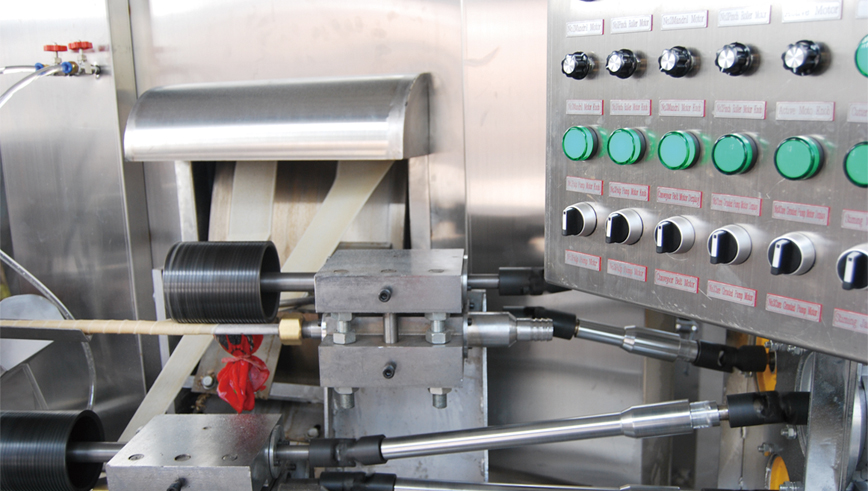In the bustling world of culinary innovation, where convenience meets creativity, a new star has emerged: the egg roll making machine. This ingenious device is transforming how we approach one of the most beloved snacks across cultures—egg rolls. From small home kitchens to large-scale commercial operations, these machines are redefining efficiency, consistency, and even fun in the art of crafting perfectly rolled delights.
Egg rolls have long been cherished for their crispy exteriors, savory fillings, and versatility. Whether you're enjoying them as an appetizer at a Chinese restaurant or whipping up a batch at home for a family dinner, there’s no denying their universal appeal. However, anyone who has ever made egg rolls from scratch knows that the process can be time-consuming and labor-intensive. Rolling each piece by hand demands precision, patience, and practice. Enter the egg roll making machine—a game-changer for food enthusiasts and businesses alike.
Why the Egg Roll Making Machine is a Game-Changer
At its core, the egg roll making machine automates what was once a manual task. Imagine feeding dough and filling into a sleek, compact device and watching it churn out uniformly shaped, tightly sealed egg rolls in seconds. No more uneven folds, torn wrappers, or inconsistent sizes. These machines take care of every step—from laying the wrapper flat to adding the right amount of filling, rolling, and sealing with impeccable accuracy.
For restaurants and catering services, this means faster production times and higher output without sacrificing quality. During peak hours, when demand surges, having a reliable machine ensures that customers receive their orders promptly while maintaining the same level of excellence they expect. For home cooks, it eliminates the intimidation factor often associated with trying new recipes. With just a few button presses, anyone can produce professional-grade egg rolls worthy of applause.
Features That Make It Stand Out
Modern egg roll making machines come packed with features designed to cater to diverse needs. Many models offer adjustable settings, allowing users to customize the thickness of the wrapper, the amount of filling, and the tightness of the roll. Some are equipped with multi-functional capabilities, enabling them to handle not only traditional egg rolls but also spring rolls, dumplings, and other similar items.
Durability and ease of cleaning are also key considerations. Most machines are built with food-grade stainless steel, ensuring hygiene and longevity. Removable parts make cleanup a breeze, which is particularly important in high-volume environments like restaurants. Additionally, many machines are compact enough to fit comfortably on countertops, making them accessible for both professional chefs and hobbyists.

A Boon for Creativity
While the primary function of an egg roll making machine is practicality, it also opens doors to culinary experimentation. Freed from the tedium of rolling by hand, cooks can focus on perfecting their fillings, experimenting with unique flavor combinations, or exploring different types of wrappers. Think beyond classic pork and cabbage—how about shrimp and mango, chicken tikka masala, or even dessert egg rolls filled with Nutella and bananas? The possibilities are endless, limited only by your imagination.
Moreover, the uniformity achieved by the machine makes presentation easier and more visually appealing. Perfectly rolled egg rolls arranged neatly on a plate elevate any dining experience, whether it’s a casual get-together or a formal banquet.
Bridging Tradition and Technology
Critics might argue that relying on a machine detracts from the authenticity of handmade egg rolls. After all, part of the charm lies in the craftsmanship passed down through generations. However, rather than replacing tradition, the egg roll making machine complements it. It preserves the essence of the dish while adapting to modern lifestyles where time is precious and expectations are high.
For those who value the tactile experience of cooking, the machine doesn’t have to replace hands-on work entirely. It can serve as a helpful assistant, handling repetitive tasks so you can focus on the aspects of cooking that bring you joy. In fact, using such technology may inspire younger generations to engage with traditional recipes they might otherwise shy away from due to perceived complexity.






























